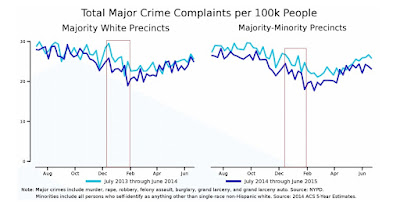Sometimes you have to take the long view.
This week Bill O’Reilly — arguably the most powerful political commentator in America — was let go from his position at Fox News. The dismissal came grudgingly. News broke that he and Fox had paid out $13 million dollars to women claiming O’Reilly sexually harassed them; Fox didn’t budge. They renewed his contract. There was outcry and protests. The company yawned. But when advertisers started dropping The O’Reilly Factor, they caved. O’Reilly is gone.
Fox clearly didn’t care about women — not “women” in the abstract, nor the women who worked at their company — but they did care about their bottom line. And so did the companies buying advertising space, who decided that it was bad PR to prop up a known sexual harasser. Perhaps the decision-makers at those companies also thought it was the right thing to do. Who knows.
Is this progress?
Donald Trump is on record gleefully explaining that being a celebrity gives him the ability to get away with sexual battery. That’s a crime, defined as unwanted contact with an “intimate part of the body” that is done to sexually arouse, gratify, or abuse. He’s president anyway.
And O’Reilly? He walked away with $25 million in severance, twice what all of his victims together have received in hush money. Fox gaves Roger Ailes much more to go away: $40 million. Also ousted after multiple allegations of sexual harassment, his going away present was also twice what the women he had harassed received.
Man, sexism really does pay.
But they’re gone. Ailes and O’Reilly are gone. Trump is President but Billy Bush, the Today host who cackled when Trump said “grab ’em by the pussy,” was fired, too. Bill Cosby finally had some comeuppance after decades of sexual abuse and rape. At the very least, his reputation is destroyed. Maybe these “victories” — for women, for feminists, for equality, for human decency — were driven purely by greed. And arguably, for all intents and purposes, the men are getting away with it. Trump, Ailes, O’Reilly, Bush, and Cosby are all doing fine. Nobody’s in jail; everybody’s rich beyond belief.
But we know what they did.
Until at least the 1960s, sexual harassment — along with domestic violence, stalking, sexual assault, and rape — went largely unregulated, unnoticed, and unnamed. There was no language to even talk about what women experienced in the workplace. Certainly no outrage, no ruined reputations, no dismissals, and no severance packages. The phrase “sexual harassment” didn’t exist.
In 1964, with the passage of the Civil Rights Act, it became illegal to discriminate against women at work, but only because the politicians who opposed the bill thought adding sex to race, ethnicity, national origin, and religion would certainly tank it. That’s how ridiculous the idea of women’s rights was at the time. But that was then. Today almost no one thinks women shouldn’t have equal rights at work.
What has happened at Fox News, in Bill Cosby’s hotel rooms, in the Access Hollywood bus, and on election day is proof that sexism is alive and well. But it’s not as healthy as it once was. Thanks to hard work by activists, politicians, and citizens, things are getting better. Progress is usually incremental. It requires endurance. Change is slow. Excruciatingly so. And this is what it looks like.
Lisa Wade, PhD is an Associate Professor at Tulane University. She is the author of American Hookup, a book about college sexual culture; a textbook about gender; and a forthcoming introductory text: Terrible Magnificent Sociology. You can follow her on Twitter and Instagram.








